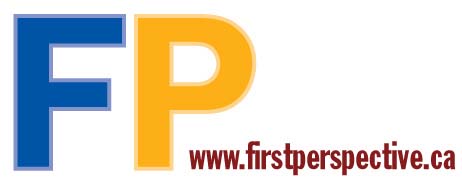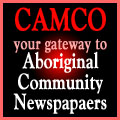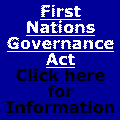

 |
 |
|
Home | Subscribe
| Employment Ads
| Training Ads
| Taiga
|
|

News Briefs Hard Facts Ottawa Watch Editorial What Was Said Commentary Obidiah Arts and Culture Discussion Cartoon Business Politics Arts and Culture Health Environment Pow Wows Education Election Info Sports Youth Womens Interests Other Events Taiga FP Contacts Schoolnet Home Sales Advertising Rates Other Publications   
|
Ottawa Watch by Alexandra Macqueen With the recent re-election of Phil Fontaine as National Chief of the Assembly of First Nations, and with the anticipated step-down of Prime Minister Jean Chretien in early 2004 (or before?), the relationship between First Nations and the Government of Canada is poised to change. Or is it? This month, we take a look at what two new leaders in these high-level positions-AFN National Chief and Prime Minister-might mean for First Nations in Canada. "Moderate approach" wins It is old news by now that Phil Fontaine has replaced Matthew Coon Come as AFN National Chief, just as he once replaced Ovide Mercredi. Fontaine has the reputation of a moderate; someone who is willing to work with the federal government to move both his and Canada's agendas forward. (There are many points of view about whether working with government is ultimately harmful or worthwhile for First Nations, depending essentially on whether you believe Canada has or is even is capable of having First Nations' interests at heart.) In both this most recent election and in the 1997 election at which Fontaine succeeded Mercredi, the moderate viewpoint apparently carried the day. Both Mercredi and Coon Come held the reputation of radicals, fronting a rights-based agenda for First Nations. Both men were viewed as aggressive, fiery, passionate and at times erratic. Fontaine, for his part, has the reputation of being conciliatory, pragmatic and diplomatic. One of National Chief Fontaine's personal claims to fame is his negotiation of the "Gathering Strength" federal response to the Royal Commission on Aboriginal Peoples. Swing votes Observers looking in at AFN electoral processes over the past decade have commented that the chiefs in assembly (those that wield the ballots) have adopted a pendulum approach to selecting national leaders - when one leader swings either too far off course or too far in one direction, a new leader is selected who will travel in the other direction, pulling the action back towards the centre. However, the reality may be more complex than that. What are AFN elections really all about, underneath the surface? Phil vs. Paul Take a moment, if you will, to contrast Phil Fontaine with Paul Martin, the front-runner and almost-certain-winner of the race to replace Jean Chretien (Ottawa pundits refer openly to Martin's anticipated "coronation" this fall at the Liberal leadership convention). Martin has been involved in federal politics for decades and is also the son of a former Member of Parliament. He is bolstered by a flush political party which has governed this country for most of the century. Indeed, the Liberals are sometimes called the "natural governing party" of federal politics. In contrast, AFN leaders are typically selected anew every three years. There is no political party structure to fall back on. In AFN elections, you can't say, "I'm a member of the Moderates" or "I support the Radicals" (or whatever-substitute Liberals and New Democrats, if you like) "and I'm voting for whoever is selected to lead my party." In the absence of a party structure, AFN elections can become personality contests, with the individual records of each of the candidates discussed in ways which seem almost irrelevant in federal politics. AFN campaigns are all about who the candidates are as people, and where they stand on "the issues." The Liberal leadership campaign is barely about the issues - given that the party's stance is already worked out with only minimal direct influence from leadership candidates - and more about whether party members feel that the candidate in question will be able to implement the party's platform in the time allotted between elections. Polo vs. boxing You can contrast the actual elections processes for federal politics and the AFN, too, not just the leadership selection process. In some ways, the "race" to replace Chretien seems more like a polo match or a debating contest-very elegant, moneyed, privileged and apart from us regular folks. While people other than old white men sometimes play on the polo field or participate in the debates, for the most part the "natural governing party" is "naturally" lead by white men of a certain age. In contrast, the AFN elections process looks more like a boxing match, one that can be rough on the participants. On the whole, the AFN is starting to look, as others have pointed out, like an organization that chews up and spits out its leaders. Without the backing of parties, leadership candidates are left to generate their own campaigns essentially from scratch, collecting dollars and pledges of support one by one. Unlike federal politics, which have the benefit of inertia pushing candidates forward (in some ways, does it even matter who the leader of the Liberal party is? We know what we're going to get no matter who actually speaks the words, right?), AFN leadership candidates build their support piece by piece with every new election. The federal Liberal process is fluid and in motion, like a train or a jet for the leader, while the AFN electoral process is like a funnycar that is built for a great big party known as the Annual General Assembly, where the only object is to reach the finish line intact. What comes next? Once leaders are selected for both the AFN and the federal Liberals, what comes next? For Martin, the horizon is stable and open - he knows what the government's agenda is and where his party wants him to go. And, as the governing party, his party wields a tremendous amount of power. More and more in the last decades, the governing party has used its parliamentary majority to sweep aside opponents and opposing points of view, ensuring it uses House of Commons procedure to limit debate, call for votes at opportune moments, and appoint the right people to the right positions to ensure successive Red Books are written into history. In contrast, the objective of the leader of the Assembly of First Nations is to influence that agenda in First Nations' favour. So the job of the chiefs who cast their ballots in support of one or the other candidates for national chief is complex: they need to determine what issues they hold close to their heart, then which candidate holds those issues most dear, and what the candidate's chances are of bringing those issues to the forefront in discussions with Canada to move them forward. Personality, issues, and potential - while these will all be factors in the leadership selection for the new leader of the Liberal party this fall, it is clear the race has already been won before the starting blocks have been officially laid out on the track. So those of us who watch and wait are now watching and waiting to see how the new (old) national chief interacts with the soon-to-be-elected new leader of the Liberal Party and likely future Prime Minister. We know what Paul Martin is up to, and we think we know what Phil Fontaine will bring to the discussions. Stay tuned in the coming months to see whether the game is played as we predict it will be. Alexandra Macqueen is a communications and government relations consultant based in Toronto, Ontario. You can reach Alexandra by e-mail at OttawaWatch@whamco.net.
|
|
Home | Employment Ads | Training Ads | Contact Us | Taiga | Web Designer |